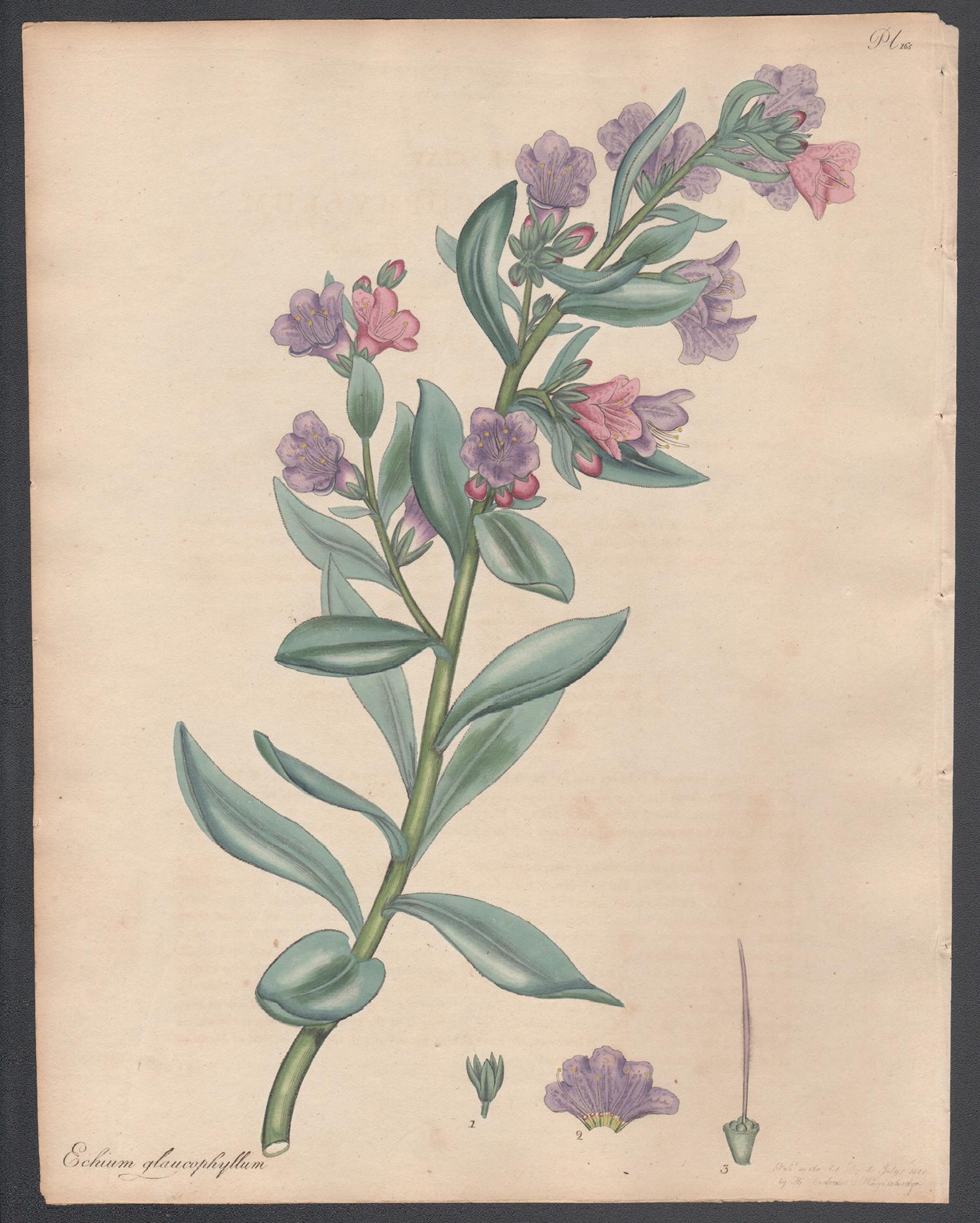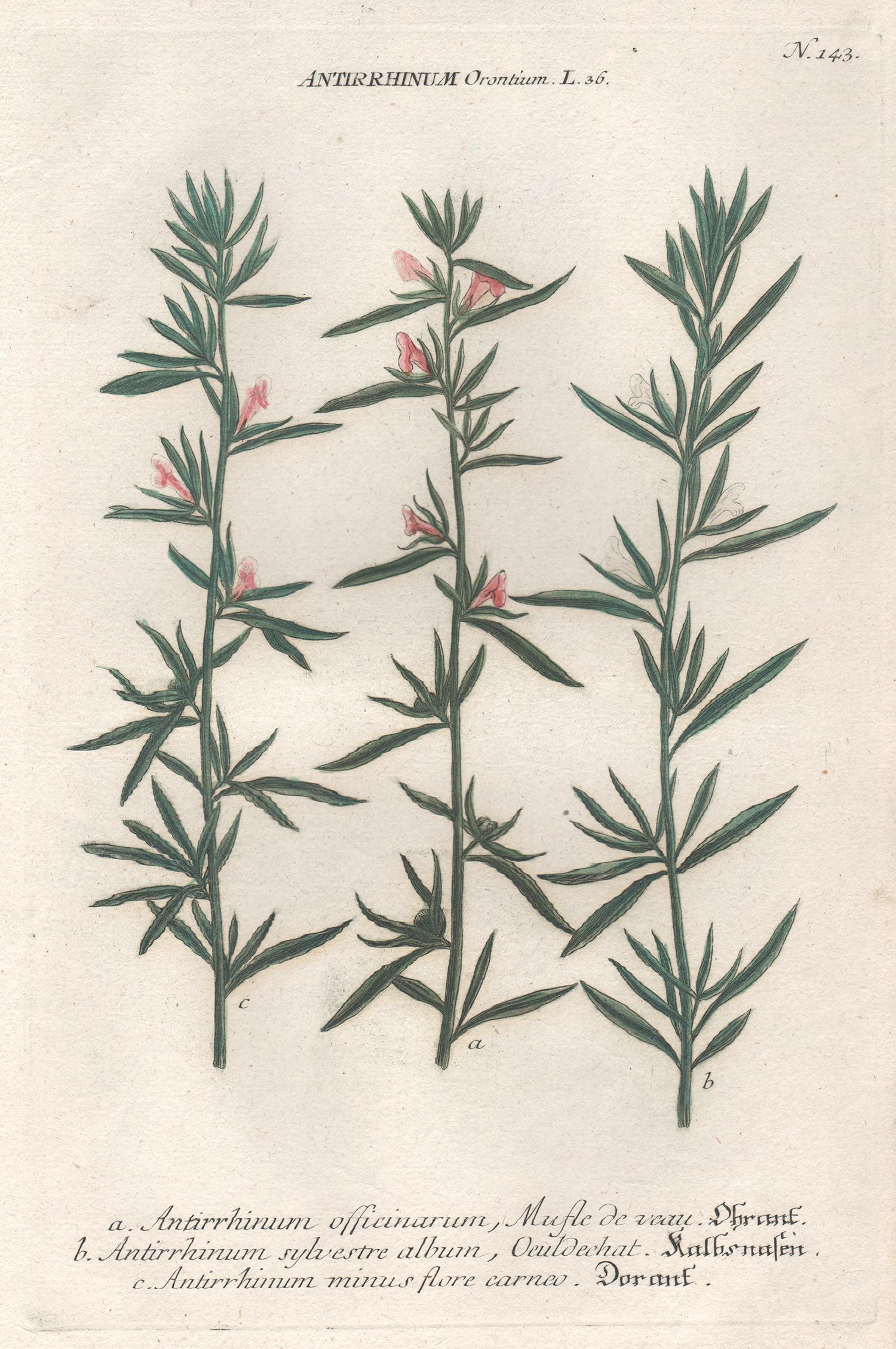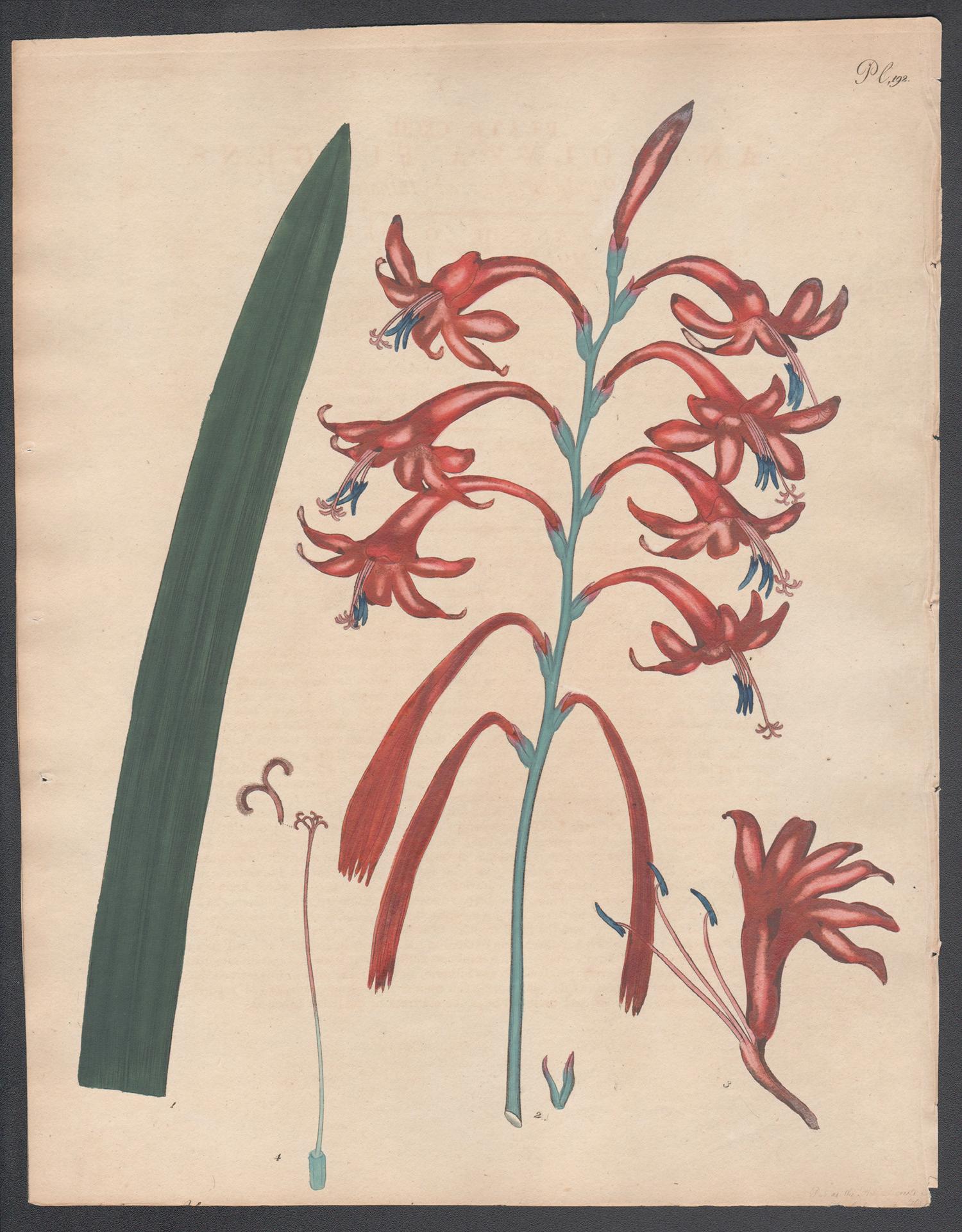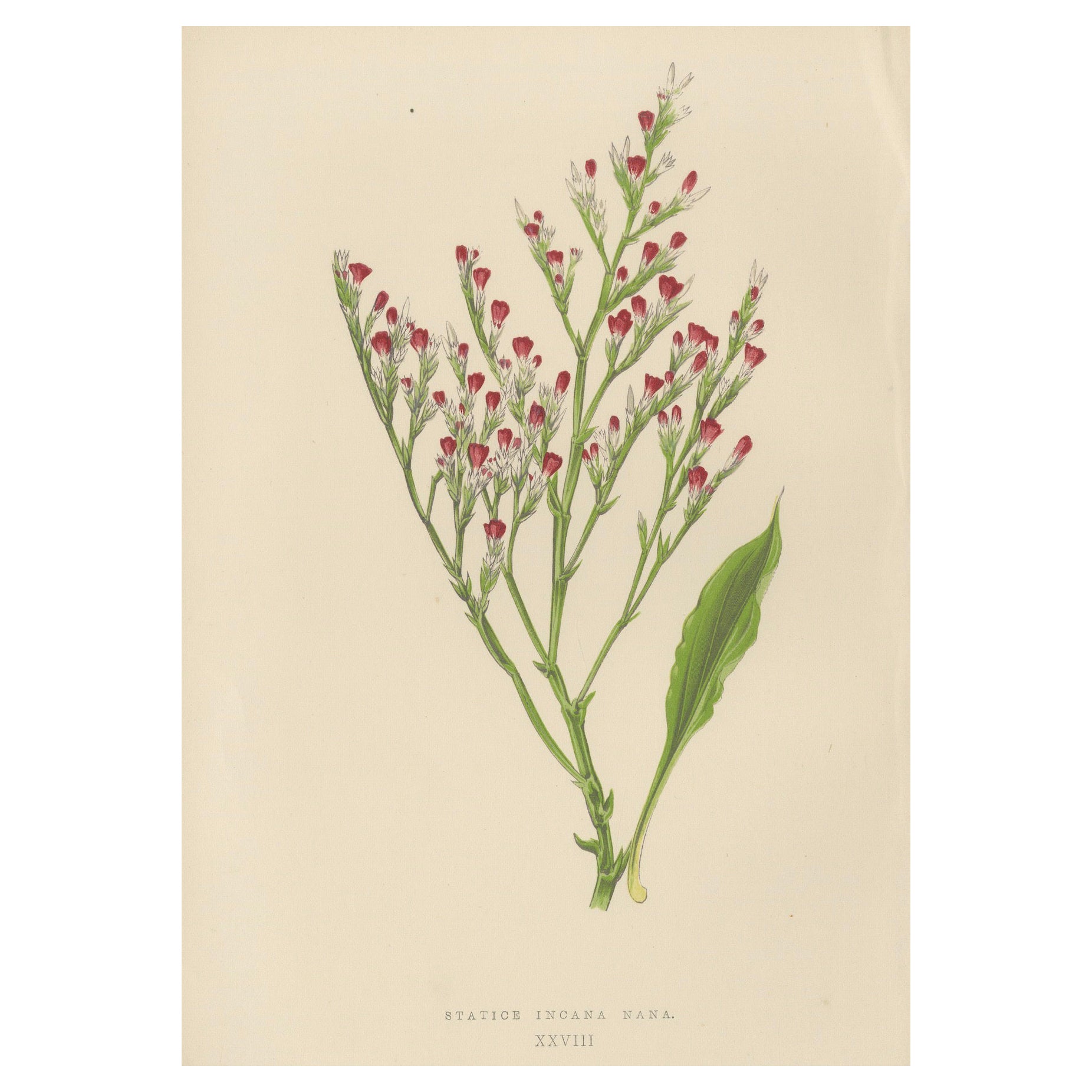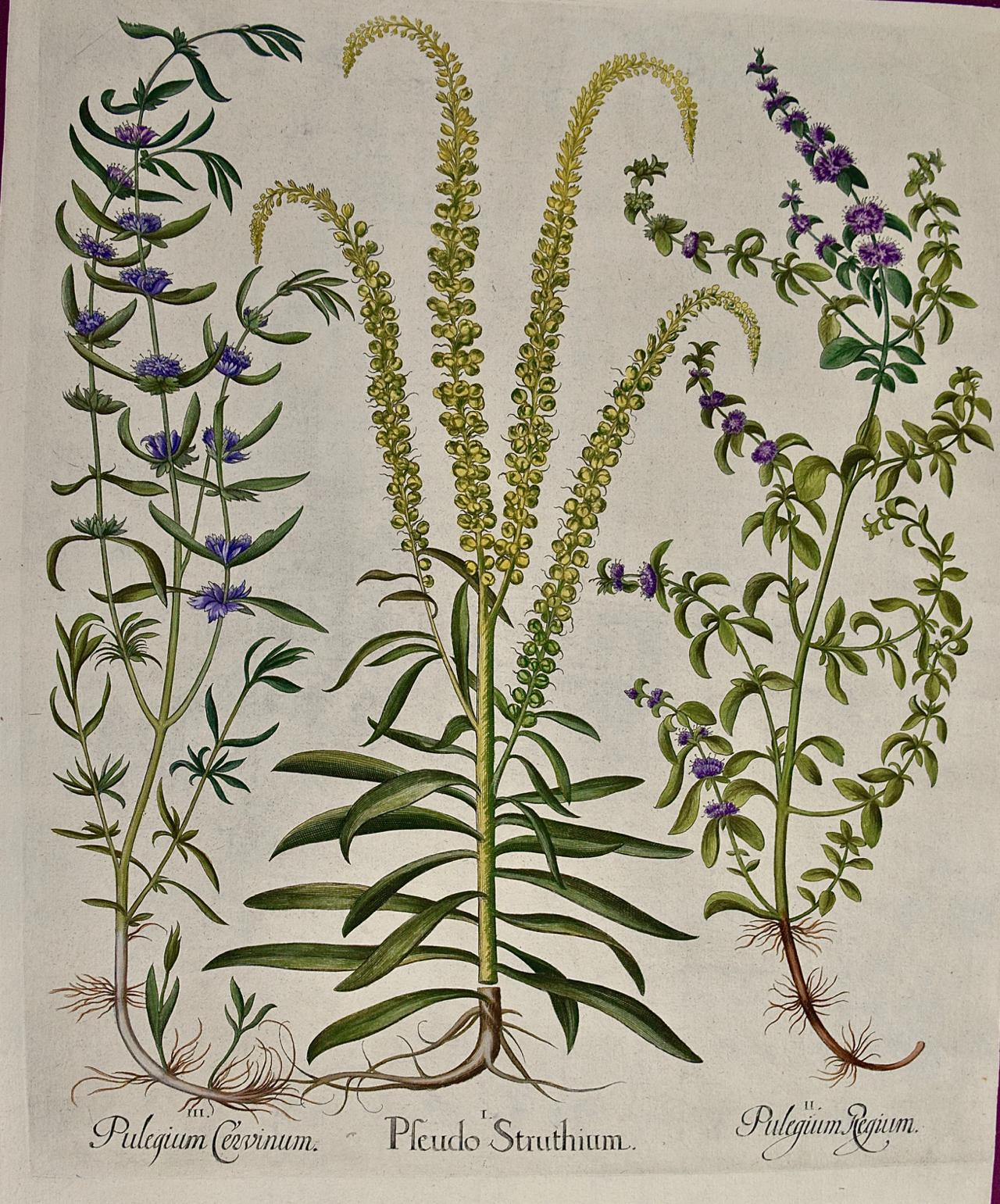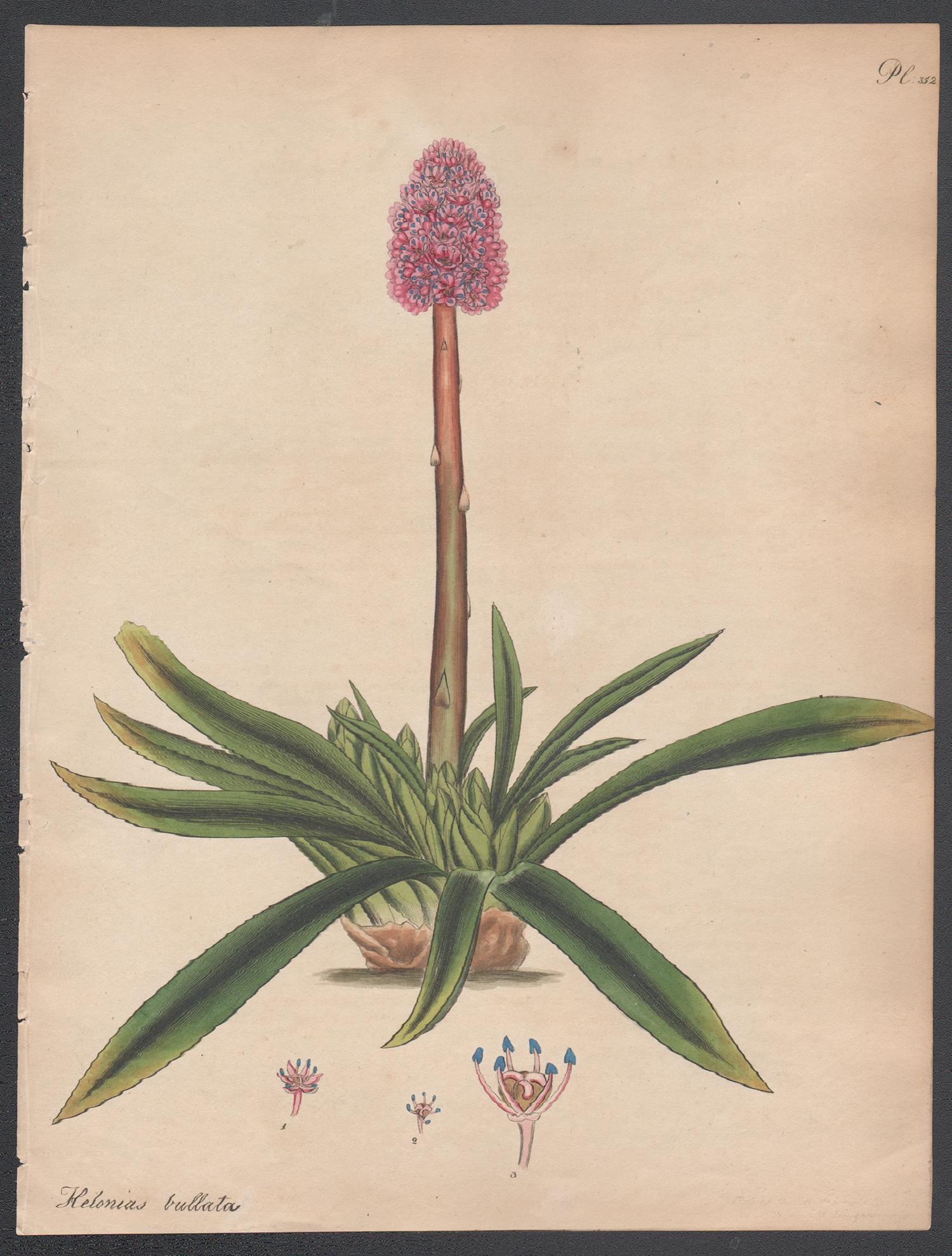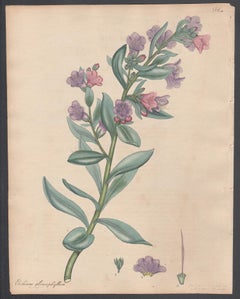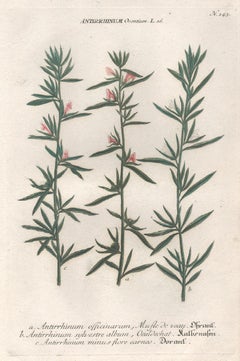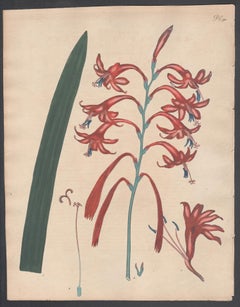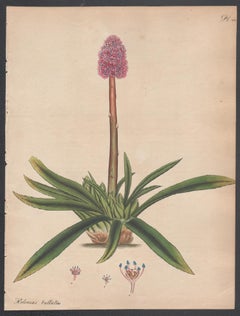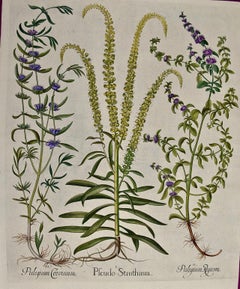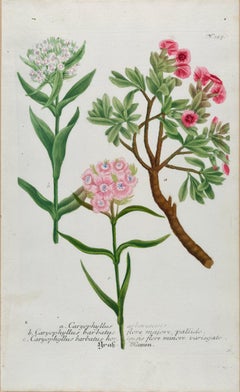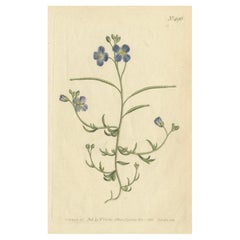Items Similar to Prickly Viper's Bugloss Henry Andrews antique botanical flower Echium engraving
Want more images or videos?
Request additional images or videos from the seller
1 of 2
Henry C AndrewsPrickly Viper's Bugloss Henry Andrews antique botanical flower Echium engraving1799
1799
$85
£65.98
€75.17
CA$121.47
A$132.29
CHF 69.75
MX$1,609.08
NOK 877.16
SEK 822.70
DKK 561.31
About the Item
'Echium Ferocissimum - Prickly Viper's Bugloss'
Native of Cape of Good Hope, South Africa.
Original copper-line engraving with original hand-colouring from Henry Andrews' 'The Botanist's Repository', 1797-1812. Accompanied by the original descriptive text. 1799.
Henry Charles Andrews was an English botanist, botanical artist and engraver. He lived in Knightsbridge and was married to the daughter of John Kennedy of Hammersmith, a nurseryman who assisted Andrews in the descriptions of the plants he illustrated. Andrews was not only the artist, but also engraver, colourist, and publisher in an era when most artists were only employed to draw plates. The 'Botanist's Repository' was his first publication, issued serially in London in ten volumes between 1797 and 1812.
265mm by 210mm (sheet)
- Creator:Henry C Andrews (1770 - 1830)
- Creation Year:1799
- Dimensions:Height: 10.44 in (26.5 cm)Width: 8.27 in (21 cm)
- Medium:
- Movement & Style:
- Period:
- Condition:Faint toning to the paper. Creasing and stitching holes along far right edge. A couple of tiny spots.
- Gallery Location:Melbourne, AU
- Reference Number:1stDibs: LU124428689322
About the Seller
5.0
Gold Seller
Premium sellers maintaining a 4.3+ rating and 24-hour response times
Established in 2005
1stDibs seller since 2019
620 sales on 1stDibs
Typical response time: 3 hours
- ShippingRetrieving quote...Shipping from: Melbourne, Australia
- Return Policy
Authenticity Guarantee
In the unlikely event there’s an issue with an item’s authenticity, contact us within 1 year for a full refund. DetailsMoney-Back Guarantee
If your item is not as described, is damaged in transit, or does not arrive, contact us within 7 days for a full refund. Details24-Hour Cancellation
You have a 24-hour grace period in which to reconsider your purchase, with no questions asked.Vetted Professional Sellers
Our world-class sellers must adhere to strict standards for service and quality, maintaining the integrity of our listings.Price-Match Guarantee
If you find that a seller listed the same item for a lower price elsewhere, we’ll match it.Trusted Global Delivery
Our best-in-class carrier network provides specialized shipping options worldwide, including custom delivery.More From This Seller
View AllEchium Glaucophyllum, Henry Andrews antique botanical flower engraving print
By Henry C Andrews
Located in Melbourne, Victoria
'Echium Glaucophyllum - Sea-green-leaved Viper's Bugloss'
Native of Cape of Good Hope, South Africa.
Original copper-line engraving with original hand-colouring from Henry Andrews...
Category
Early 19th Century Naturalistic Still-life Prints
Materials
Engraving
Antirrhinum Orontium - 18th century Weinmann botanical plant flower engraving
By Johann Wilhelm Weinmann
Located in Melbourne, Victoria
'Antirrhinum Orontium'
Mezzotint printed in colours. Circa 1740.
From Johann W Weinmann's Phytanthoza Iconographia, published in Regensburg 1737-45. The first botanical series to u...
Category
18th Century Naturalistic Still-life Prints
Materials
Engraving
Antholyza Fulgens. Henry Andrews antique botanical flower engraving print
By Henry C Andrews
Located in Melbourne, Victoria
'Antholyza Fulgens - Refulgent-flowered Antholyza'
Original copper-line engraving with original hand-colouring from Henry Andrews' 'The Botanist's Repository', 1797-1812. Accompani...
Category
Early 19th Century Naturalistic Still-life Prints
Materials
Engraving
Spear-leaved Helonias, Henry Andrews antique botanical flower engraving print
By Henry C Andrews
Located in Melbourne, Victoria
'Helonias bullata - Spear-leaved Helonias'
Native of Carolina, North America.
Original copper-line engraving with original hand-colouring from Henry Andrews' 'The Botanist's Repos...
Category
Early 19th Century Naturalistic Still-life Prints
Materials
Engraving
Chinese Scrub (Cassinia arcuata), antique botanical lithograph
Located in Melbourne, Victoria
'Chinese Scrub (Cassinia arcuata, Rob. Brown)
Colour lithograph, 1909.
Category
Early 20th Century Naturalistic More Prints
Materials
Lithograph
Swallow-wort Gentian, English antique flower botanical chromolithograph, 1895
By Frederick William Hulme
Located in Melbourne, Victoria
'Swallow-wort Gentian'
Process print from Frederick William Hulme’s ‘Familiar Wild Flowers’, circa 1890.
Hulme was known as a teacher and an amateur botanist. He was the Professor ...
Category
Late 19th Century Naturalistic Still-life Prints
Materials
Lithograph
You May Also Like
Alpine Botanical Lithograph of Dwarf Hoary Sea-lavender, 1874
Located in Langweer, NL
Title: Alpine Botanical Lithograph of Dwarf Hoary Sea-lavender, 1874
Description: This exceptional botanical lithograph, dating from 1874, depicts the Dwarf Hoary Sea-lavender, scie...
Category
Antique 1870s Prints
Materials
Paper
Flowering Peppermint Plants: A 17th C. Besler Hand-colored Botanical Engraving
Located in Alamo, CA
This is a hand-colored copper plate engraving entitled "Pulegium Cervinum, Pseudo Pulegium Struthium, Pulegium Regium", depicting flowering Peppermint, Weld and Pennyroyal plants respectively from Basilius Besler's landmark work, Hortus Eystettensis (Garden at Eichstatt), first published in 1613 in Eichstatt, Germany near Nuremberg and later in 1640 and 1713.
This beautiful colorful engraving is printed on thin laid chain-linked paper. There are subtle creases in the right upper corner, very common with Besler's relating to the drying of the paper during its production. The right margin is thinner than the others. The print is otherwise in excellent condition with striking hand-coloring.
Basilius Besler (1561–1629) was an apothecary and botanist. He was curator of the Willibaldsburg Castle garden of Johann Konrad von Gemmingen, prince bishop...
Category
1640s Academic Still-life Prints
Materials
Engraving
Flowering Sweet William Plant: 18th C. Hand-colored Weinmann Botanical Engraving
By Johann Wilhelm Weinmann
Located in Alamo, CA
This hand-colored botanical mezzotint and line engraving by Johann Wilhelm Weinmann (1683-1741) is entitled "a. Caryophyllus Arborescens, b. Caryophyllus Barbatus". It is plate 327 i...
Category
Mid-18th Century Naturalistic Still-life Prints
Materials
Engraving, Mezzotint
Exquisite 1800 Blue Wildflower Botanical Engraving – A Rare Floral Masterpiece
Located in Langweer, NL
Delicate Blue Flower Study, Plate No. 496
This engraving is from a botanical series by William Curtis, likely part of the publication "The Botanical Magazine," which was known for i...
Category
Antique Early 1800s Prints
Materials
Paper
$131 Sale Price
20% Off
The Dipsaceae - Lithograph by Vincenzo Tenore - 1870s
Located in Roma, IT
Lithograph hand watercolored.
Plate from "Atlante di Botanica popolare ossia Illustrazione di Piante Notevoli di ogni famiglia" (Atlas of popular botany or illustration of notable p...
Category
1870s Modern Figurative Prints
Materials
Lithograph
Chironia Baccifera Berry-Bearing Chironia /// English Botanical Flower Engraving
By William Curtis
Located in Saint Augustine, FL
Artist: William Curtis (English, 1746-1799)
Title: "Chironia Baccifera Berry-Bearing Chironia" (Vol. 7, Plate 233)
Portfolio: The Botanical Magazine; or, Flower-Garden Displayed
Year...
Category
1790s Victorian Still-life Prints
Materials
Watercolor, Engraving, Intaglio
More Ways To Browse
Antique South Africa
Cape Of Good Hope
Bronze Of Ballet Dancers
Bronze Round Sculptures
Bruno Helgen
Bry Paris
Camel Oil Painting
Cavalier King Charles Oil Painting
Dior Horse
French Quarter Painting
German Paintings Nude
Gumball Machine
Horse Portrait 19th Century
Hunt Slonem Blue Diamond
Hunt Slonem Chinensis
Joan Miro Bronze
John Ernst
Kaws Changbai
